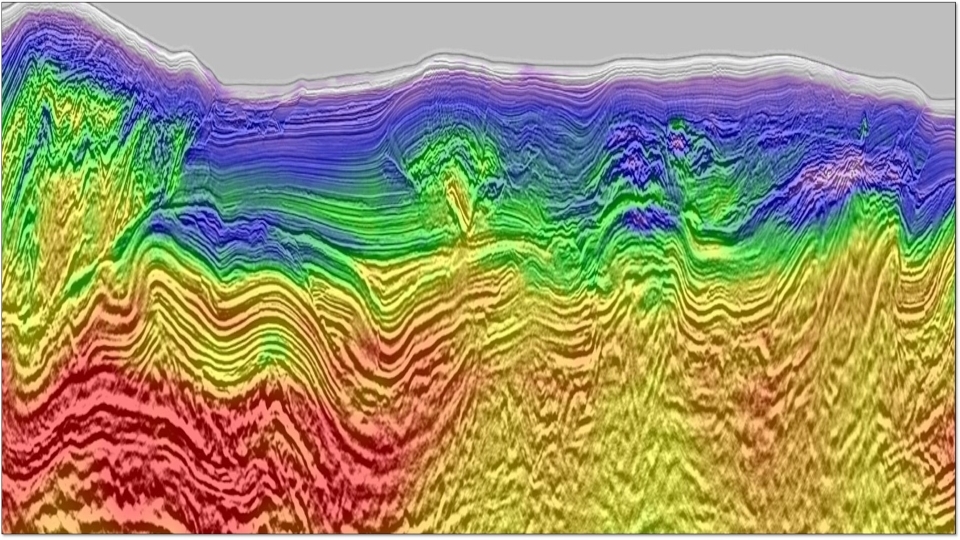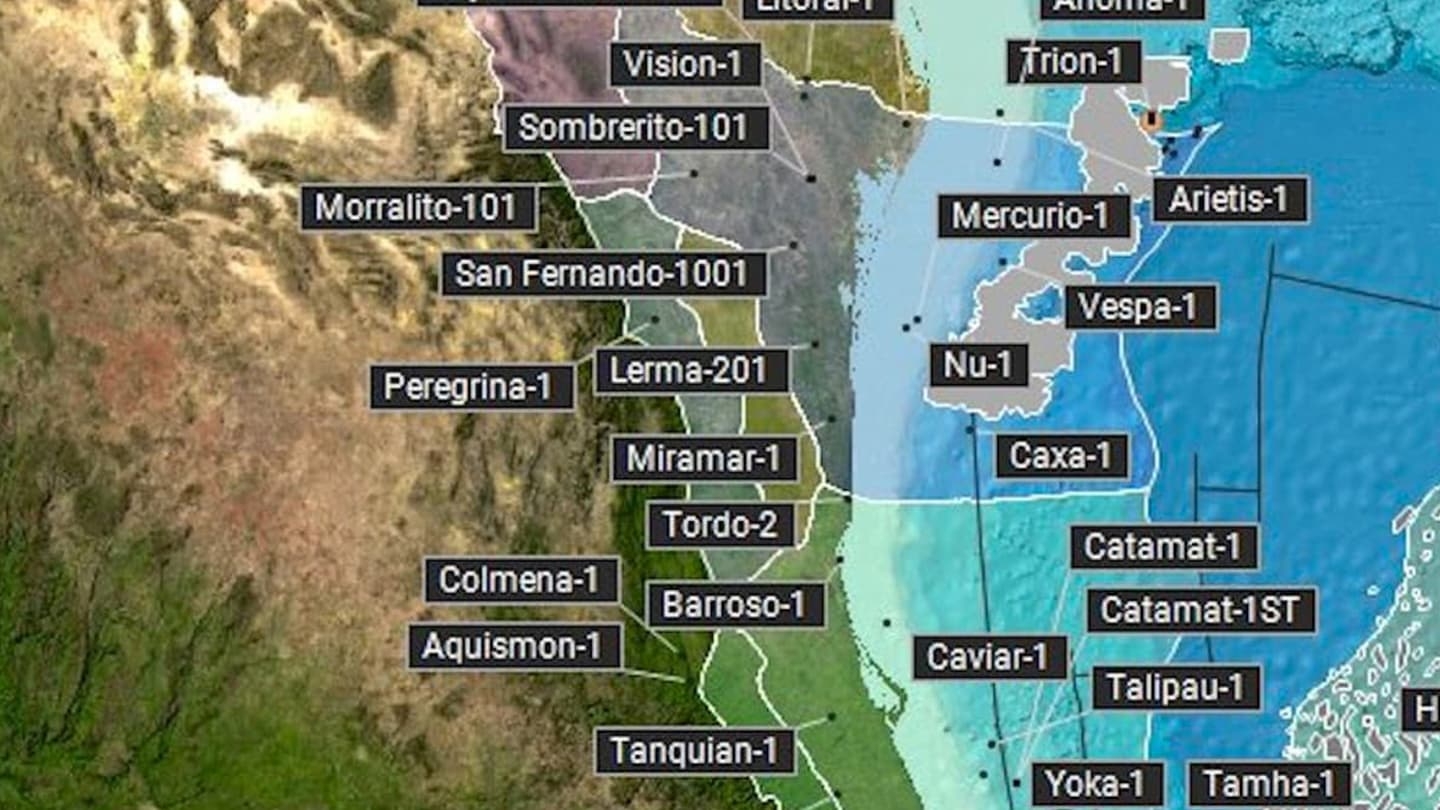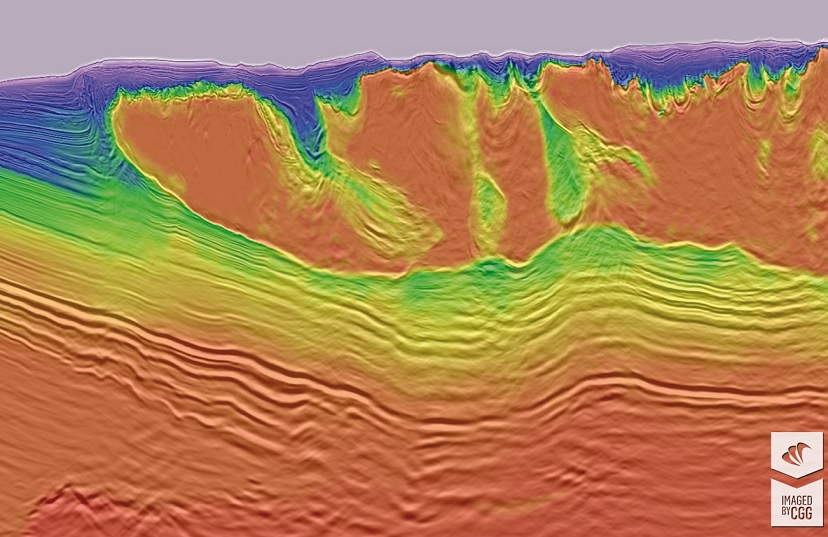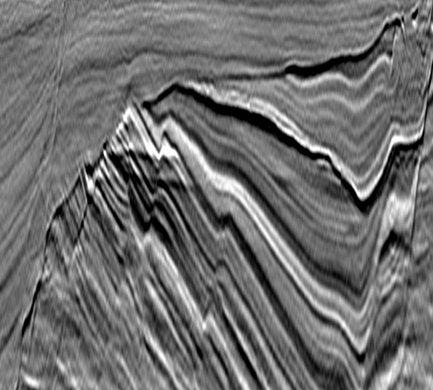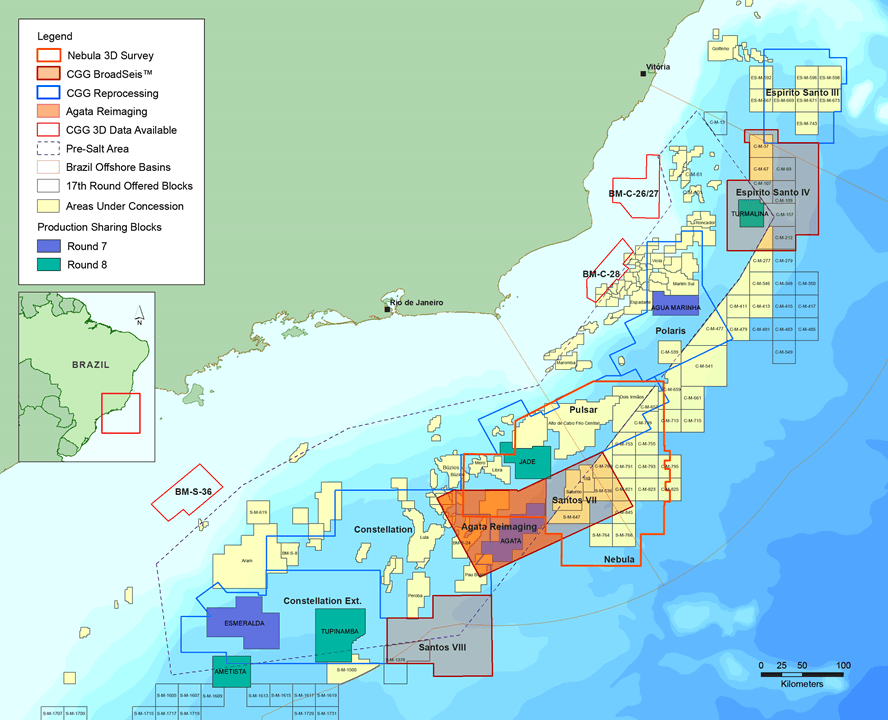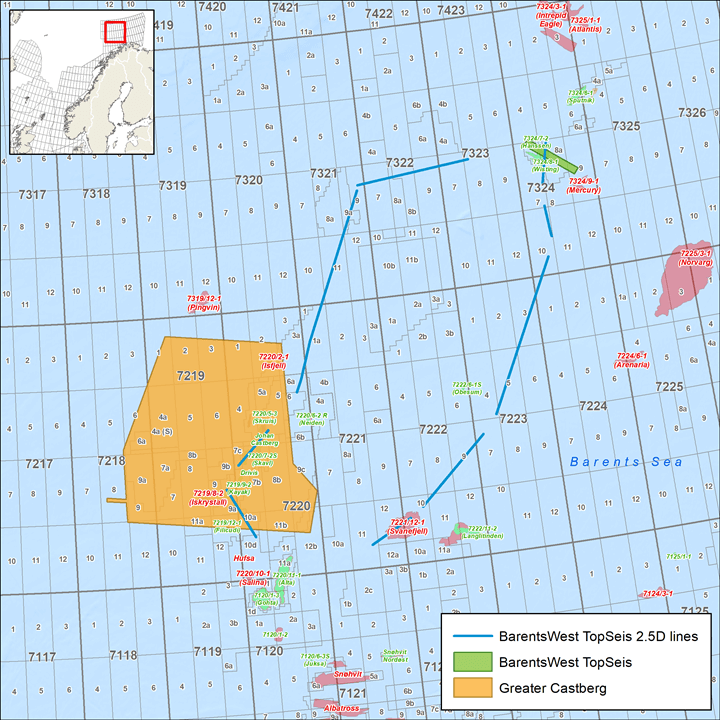Full Waveform Inversion (FWI)
Detailed, data-driven subsurface model building with full waveform inversion (FWI)
Full waveform inversion (FWI) accurately computes highly detailed, data-driven models of subsurface velocity, absorption (Q) and reflectivity, for use in seismic imaging and interpretation, by minimizing the difference between observed and modeled seismic waveforms. Our pioneering seismic inversion technology goes beyond refraction and reflection tomography techniques, which use only the travel time kinematics of the seismic data, using additional information provided by the amplitude and phase of the seismic waveform.

Time-lag FWI
Time-lag FWI (TLFWI) is a proprietary CGG technology that delivers dramatic improvements in seismic imaging. Compared to conventional FWI, this robust new approach minimizes classic FWI cycle-skipping issues related to an inaccurate initial model, amplitude mismatches and poor signal-to-noise ratio.
TLFWI has been highly successful in velocity model building for complex geological settings around the world, including sub-salt, pre-salt, carbonates, thrust belts and shallow gas. It is regularly used in conjunction with newly-acquired ocean bottom node (OBN) data sets and as a way of improving the image on legacy seismic data.
FWI Imaging
Our FWI workflow can output an image of subsurface reflectivity directly, often providing a superior result in complex areas where migration algorithms struggle. Compared with a conventional migration image, the reflectivity image directly output from FWI often provides additional structural information with better illumination and higher signal-to-noise ratio naturally as a result of many iterations of least-squares fitting of the full-wavefield data, including diving waves and multiples.
We have successfully applied FWI imaging to varied data types in different geologic settings, solving some of the most challenging imaging problems that have not been resolved with conventional migrations.

Elastic Time-lag FWI
To overcome limitations imposed by acoustic assumptions, we have developed an elastic FWI algorithm that combines an elastic modeling engine with the time-lag cost function.
FWI images derived from E-TLFWI show considerable benefits, such as:
- reduced salt halo
- sharpened salt boundaries
- improved event focusing
- better structural continuity
- higher signal-to-noise ratio
Related Surveys
Santos and Campos Basins
Explore South America’s offshore pre-salt with high-quality, broadband, pre-stack depth migrated seismic data.
Greater Castberg
Get superior imaging with our state-of-the-art TopSeis™ data for shallow-to-intermediate-depth targets in the Barents Sea.
Reimaging Gulf of Mexico
Bring new value to legacy data sets with advanced reprocessed seismic data for the Gulf of Mexico.
